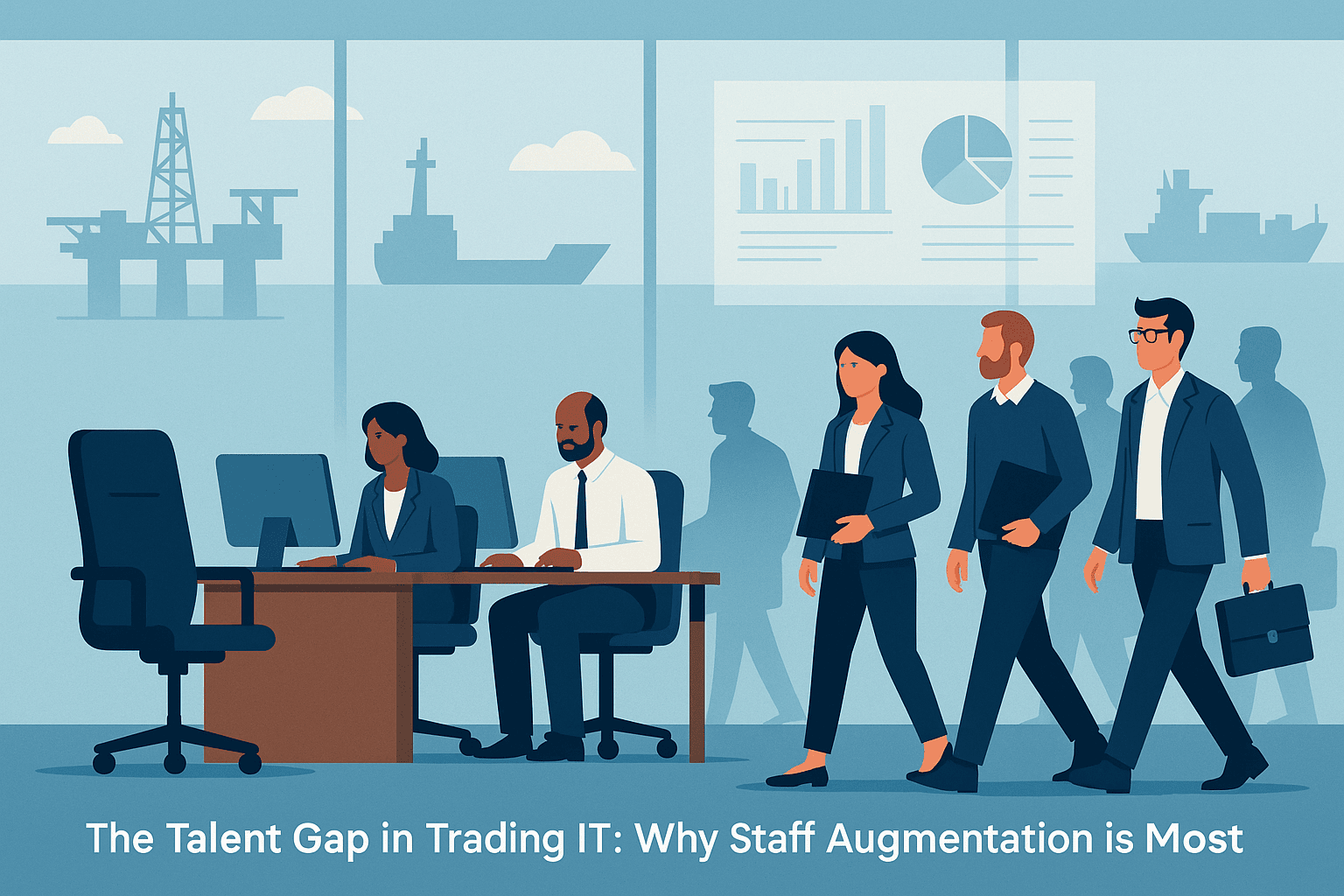Commodity trading IT has become more complex than ever. Firms must manage legacy CTRM systems written in .NET, build Python pipelines for analytics, integrate with Databricks and Snowflake, and deploy workloads in Azure and Kubernetes. The demand for talent across this stack far outpaces what the hiring market can provide.
Recruiting full-time developers is slow and costly. Even when firms find the right candidates, onboarding and training can take months. Meanwhile, project deadlines for compliance, automation, and new product rollouts cannot wait. The result is a persistent talent gap that slows innovation and increases operational risk.
Staff augmentation addresses this challenge directly. Instead of waiting for permanent hires, CIOs can quickly scale their teams with external engineers who already bring the required expertise. A .NET specialist can stabilize CTRM integrations, a Python developer can accelerate real-time analytics, and a cloud engineer can design Kubernetes deployments in Azure. These skills are delivered on demand, exactly when projects need them.
The model also provides flexibility. Firms can scale augmented teams up or down depending on workload, avoiding the long-term cost of overstaffing. Knowledge transfer ensures that internal staff remain in control of critical systems, while augmented specialists deliver the heavy lifting required to meet deadlines.
The talent gap is not going away. As technologies evolve and regulations tighten, demand for specialized IT skills in trading will only grow. CIOs who embrace staff augmentation will be able to fill gaps quickly, maintain momentum on critical projects, and keep their firms competitive in a fast-changing market.

